Why Goji Berries Are the Perfect Fruit for Beginner and Expert Gardeners Alike
Goji berries, also known as Lycium barbarum or wolfberries, are bright red fruits that have been prized in Asia for centuries. In recent years, they’ve become popular in the United States as a superfood, known for their antioxidants, amino acids, and vitamins. In addition to their health benefits, goji berries are easy to grow at home. With the right goji berry plant care, these berry bushes can continue to produce abundant fruit year after year.
Whether you are planting goji berry plants in containers or in the ground, this guide has what you need. It covers soil preparation, watering, pruning, pest management, and seasonal care for growing goji berries successfully.

What is a Goji Berry Plant?
The goji berry plant (Lycium barbarum) is a hardy, drought-tolerant, and disease-resistant berry bush that thrives in USDA zones 3–10. These self-fertile plants don’t need a second pollinator, making them perfect for home gardeners. They grow best in full sun and draining soil, though they can tolerate partial shade.
The fruit itself is small, bright red, and slightly tart. You can enjoy it fresh, brew it into tea, or dry it into chewy dried berries that store well. Goji berries are packed with antioxidants, amino acids, and vitamins B and C, making them a nutritious addition to your garden and diet. Read more about the antioxidant power of goji berries here.
Benefits of Growing Goji Berries
Growing goji berries comes with many advantages:
- Adaptability: They thrive in different soil types and climates across the United States.
- Low maintenance: These berry bushes are drought tolerant, pest-resistant, and easy to prune.
- Health benefits: Rich in antioxidants, amino acids, and vitamins.
- Extended harvest: Once established, plants goji berries will continue to produce from midsummer until the first frost.
Adding a goji plant to your garden means you’ll enjoy both beauty and nutrition for years to come.

How to Plant Goji Berries
When it comes to planting goji berry plants, you have three options:
- Seeds: Cheapest but slowest—plants may take several years to fruit.
- Root cuttings: Faster than seeds, with reliable growth.
- Potted plants: The quickest way to establish a productive berry bush. Check out potted goji berry plants for sale here.
Planting in the Ground
- Choose a site with full sun and draining soil.
- Test your soil pH—it should be between 6.8 and 8.1. You can use soil pH testing kits. If your soil is too acidic, add oyster shell flour to raise pH.
- Space plants at least 2 feet apart.
- Soak bare root goji plants in water for 15–60 minutes before planting.
- Place the crown (where the stem meets the root) level with the top of the soil.
- Water well and cover with organic mulch to retain soil moisture.
Planting in Containers
Goji berries grow well in pots, making them a great choice for patios or small spaces. Start with at least a 5-gallon container, like this black plastic pot. Make sure to use organic potting soil for best results.
Here’s a complete guide to growing goji berries in containers.

Goji Berry Plant Care
Watering and Soil Moisture
While goji plants are drought tolerant once established, young trees need consistent watering. Keep soil moist but not soggy. Deep watering once a week is usually enough.
Sunlight Needs
These berry bushes prefer full sun, though in sweltering hot climates, a bit of partial shade during peak summer heat can prevent leaf scorch. In extreme heat, you can protect them with shade cloth.
Fertilizing
Goji berries do best without much fertilizer. Avoid fertilizing with high-nitrogen products, as they encourage leaf growth at the expense of fruiting. Instead, enrich soil with organic matter or compost at planting time.

Training and Pruning Goji Plants
Pruning is key for long-term productivity.
- Year 1: Do not prune; allow the plant to establish roots.
- Year 2: Select one strong shoot as the main trunk. Remove other shoots up to 15 inches from the ground.
- Summer tip: When the plant reaches 2 feet tall, pinch off the growing tip to encourage lateral branches, where most fruit develops.
- Ongoing care: Thin crowded branches after harvest. Remove unproductive branches to help the plant focus energy on fruit.
For detailed pruning techniques, see this guide to training goji berry plants.

Pest and Disease Management
Goji berries are disease resistant, but pests and fungi can still appear.
Common Pests
- Spider mites: Thrive in hot, dry weather. Use insecticidal soap or miticides. You can also introduce beneficial insects like ladybugs or green lacewings. Learn more about spider mites here.
- Aphids: Can be controlled with natural predators such as parasitic wasps. Read tips on controlling aphid populations here.
Common Diseases
- Powdery mildew: Appears as white coating on leaves. Improve airflow by pruning and spacing plants. Read more about powdery mildew here. Treat with organic sprays from our powdery mildew treatments.

Seasonal Care
- Early spring: Prune dead or damaged branches. Apply fresh mulch.
- Summer: Provide extra water during heat waves and watch for pests.
- Fall: Harvest berries regularly to encourage more fruit.
- Winter: Apply mulch around the base to protect roots from freezing.
With proper goji berry plant care, your shrubs will continue to produce reliably every year.
Conclusion
Growing goji berries is simple, rewarding, and suitable for gardeners of all experience levels. These hardy, disease-resistant shrubs thrive in full sun, adapt to various soil types, and require little more than proper watering, pruning, and seasonal care.
Whether you grow your goji plant in containers, raised beds, or garden soil, you’ll enjoy bright red berries that can be eaten fresh, brewed into tea, or stored as dried berries. With the right goji berry plant care, you’ll continue to produce abundant harvests for years to come.
Ready to start growing? Explore our collection of goji berries and add this nutrient-packed goji berry bush to your garden today.
FAQs About Growing Goji Berries
How long does it take for goji berries to grow?
Can you grow goji berries indoors?
Do goji berries need a trellis?
Can goji berries be grown in pots?
How do you plant goji berries?
Can you grow goji berries from seeds?
How do you grow goji berries in pots?
How do you grow goji berries from cuttings?
How far apart should you plant goji berries?
Resource Area: Container & Space‑Smart Goji
Perfect for growers with limited space like patios or balconies:
- Growing Goji Berries in Containers – Ideal for potting and small-scale gardening.
- Innovative Uses of Goji Berry Plants in Landscaping – Design-savvy ideas outside traditional plots.
- Propagating Goji Berries from Seeds and Cuttings – Grow your own stock for containers.
Enjoy our collection of goji berry plants for sale!
Free Download Growing Guide



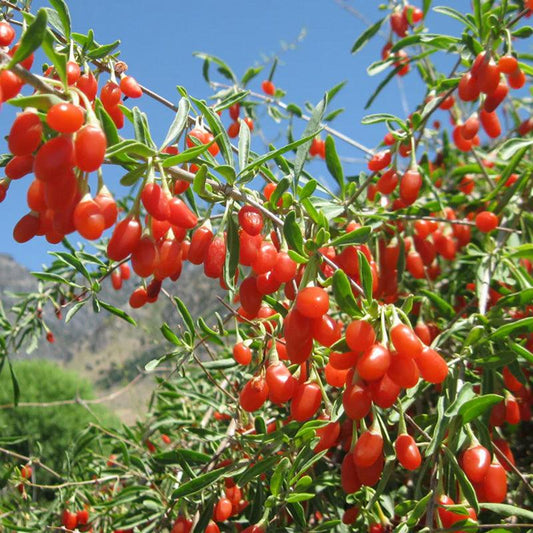




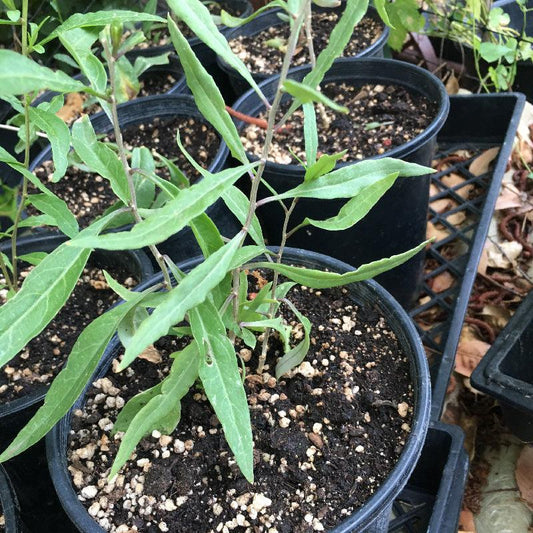
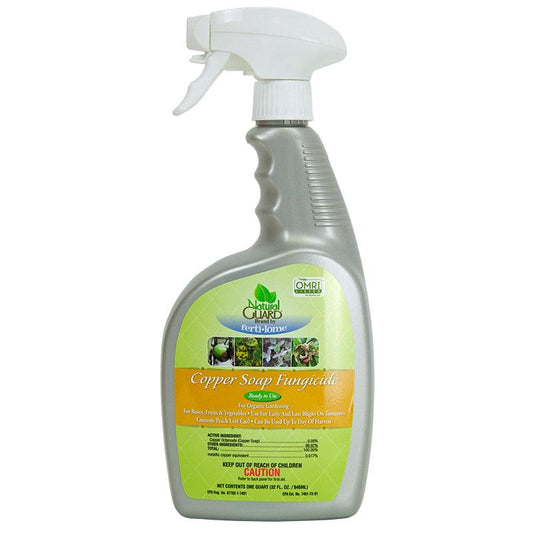



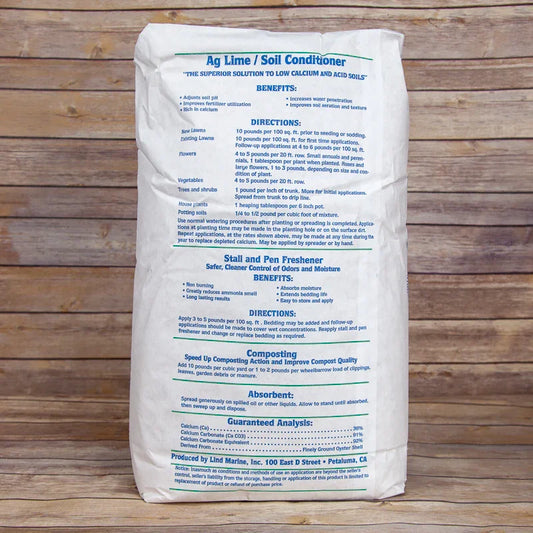
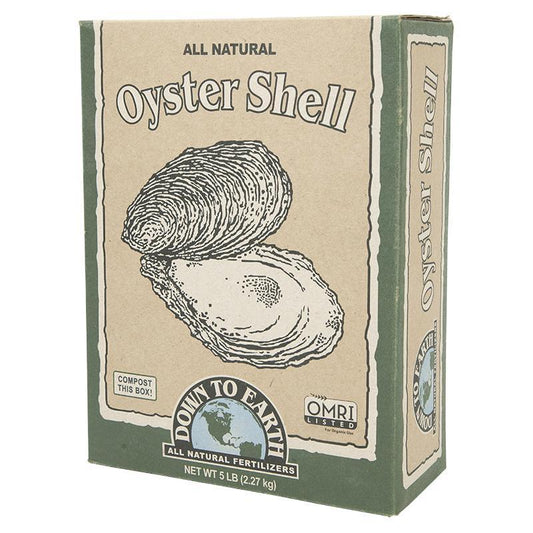
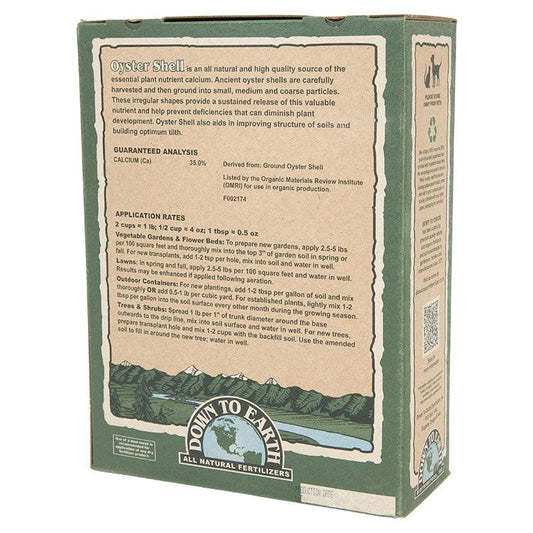

42 comments
Andree, have you measured your soil pH and the levels of phosphorus in your soil? Usually when a plant does not produce flowers it is a problem with their nutrient levels in the soil, in particular, phosphorus. Goji berries also need a more alkaline soil than most plants. So combined with getting your soil pH correct and increasing your phosphorus, your plants should be producing more fruit the following year.
I bought a gogi plant 5 years ago. I transplanted it in a larger pot that I burried in the ground (did not want it to spread like raspberries). It is in a sunny spot, near the rhubarb which is doing very well. I live in zone 5A.
It greens very well in the spring but no flowers. This spring for the first time I saw very few white flowers but they produced no berry. Last year and this year I saw a few purple blooms at the end of August-beginning of September which of course will turn into nothing.
Any suggestion or do I just throw it in despair? Thank you for any useful response.
Tish, a couple of things to consider, how is the pH of your soil. Goji berries like a more alkaline soil. Also how much phosphorus is in your soil? Plants need phosphorus to flower and produce fruit so you may be lacking that element. Maybe some bone meal. That will help raise the pH and also provide some phosphorus.
Hi there. My goji berry was a potted plant I put in the garden 7 yrs ago. I’ve trimmed the bush but have had no berries. I’ve seen a few flowers but no nerries. It does make lots of baby plants that I pass on.
Why no berries?
Thank you.
EMJ, I think they turn from green to red. However there are black goji berries. Do you know what varieties you planted? We sell the Phoenix Tears, which product red berries when ripe. They are hardy to zone 3, so they should be ok with a light frost. They do need more alkaline soil so you might want to check your soil’s pH and add some lime if your soil is too acidic.